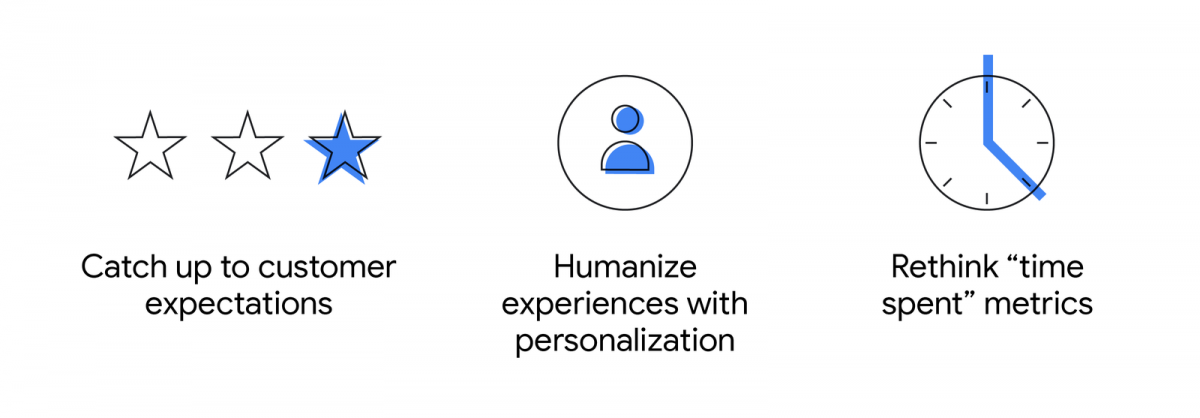Nearing the end of a most challenging year, people are slowly beginning to shop again. But they’re doing so carefully and consciously, buying local and embracing e-commerce more than ever.
Going forward, brands will need to be ready to adopt a variety of in-store and online measures to cater to today’s shopper. Savvy yet cautious customers expect a safe in-store experience on top of quality service, have a growing desire for personalization, and want an online experience that’s as engaging and humanized as an in-person one. Meeting these needs leaves many brands faced with a massive undertaking in order to survive.
To understand what’s top of mind for customers, Havas CX surveyed a combination of 2,000 prosumers — early adopters who are forward thinking, influential, and proactive in what they do and share — and mainstream consumers across the U.S., U.K., France, and China.1 What we learned will help brands deliver meaningful customer experiences now and in a post-COVID world.

Catch up to customer expectations
As customers shop more across digital platforms, they’re confidently demanding an end-to-end experience that rises to their expectations. Digitally mature, customer-focused brands able to meet people’s needs during the pandemic have left their competitors scrambling to improve or lose market share. Last, best interactions mean brands must meet evolving customer standards to remain relevant. That is, the last, best experience a shopper has anywhere becomes the minimum expectation for the experience they want everywhere.
If your website is currently your primary storefront, prioritize the experience. According to our survey, 78% of prosumers and 59% of mainstream consumers want to easily connect with a human, whether that’s through chat or video interaction, even when there’s no physical store. Be mindful of additional fees, especially if your online store is the only available option. Today’s customers see maintaining digital storefronts as cheaper than brick-and-mortar, and paying more for services feels backward and penalizing. They’re much more likely to buy from a brand if they offer free returns (91% prosumer, 84% consumer), free shipping (89%, 85%) and fast delivery (86%, 74%).
Simple and helpful also wins when it comes to site content and merchandising. People are burned out from spending so much time online; don’t make them dig to find what they need. If a human isn’t available, 62% of prosumers and 39% of mainstream consumers want real-time chat with automated customer service. They’re also more likely to buy if they can find easy answers to their questions (89% prosumer, 77% consumer) and see customer reviews (87%, 71%).
Customers no longer have tolerance for brands whose digital experiences are driven by costs and legacy tech. They’ve become accustomed to user-centric champions and expect nothing less going forward.
Humanize experiences with (the right) personalization
Personalization isn’t just a marketing buzzword, and many brands are getting it wrong. To customers, personalization is knowing them beyond inserting their name into an email. It’s removing friction from the experience, based on their previous interactions with your brand.
Personalization should connect online to real life, leveraging digital to make the day-to-day easier. The majority of prosumers (81%) and mainstream consumers (59%) alike expect retailers to make their in-store visits faster and safer via personal appointments and digital queues. Online, they not only want real-time human connection, but one-to-one shopping advice, curated choices and help making decisions (73% of prosumers; 56% of mainstream consumers).
Use customer data to personalize future experiences as well. In a post-pandemic world, 65% of prosumers and 47% of mainstream consumers want recommendations based on their past purchases. And loyalty needs to be reciprocated: 88% of prosumers and 75% of mainstream consumers want brands to reward their loyalty with special prices and promotions.
Model personalization on the way local store owners treat regular customers, not the latest tech capabilities. Technology is a means to meet the needs of customers. While it helps us know a lot about them, data should be used to improve their experiences first and foremost. In a world where consumers are more mindful of privacy and how their information is used, showing how it can create positive, helpful experiences for them is essential.
Rethink ‘time spent’ metrics
The days of people wanting to explore a website are long over. In a one-click world, where time is a precious commodity, customers are here for the stuff, not the site itself. They want to choose when and where to spend time with brands, and they trust brands that respect that time.
For 92% of prosumers and 78% of mainstream consumers, your site or app must, above all, be fast and easy to navigate. Don’t belabor people with time-consuming interactions or get in the way with flashy experiences that create slow loads or “clever” navigation. This includes checkout. Rote interactions should be as frictionless and minimal as possible; 92% of prosumers and 83% of mainstream consumers want a checkout process that’s quick and easy.
Consider creating benchmark metrics from your customers’ POV. Instead of trying to maximize time on site, see how fast you can get your customers through the experience. Allow them to choose where they pause and spend time. Most likely, it will be looking at the things only your brand can provide.
The pandemic has opened new avenues for brands and customers. This isn’t temporary; our behaviors are changing, and the role of brands is shifting. The opportunity, and mandate, is to rethink what the customer experience should be. Now, more than ever, strategic plans must be put in place that address customer experience at the heart of a brand’s digital and retail footprint.
- While ConnectAmericas strives to make the information published from third parties authors as timely and accurate as possible, the site makes no claims, promises, or guarantees about the accuracy, completeness, or adequacy of the contents and expressly disclaims liability for errors and omissions in the contents of these publications. No warranty of any kind, implied, expressed, or statutory, including but not limited to the warranties of non-infringement of third party rights, title, merchantability, fitness for a particular purpose or freedom from computer virus, is given concerning the contents of this website from third parties or its links to other Internet resources.
- Reference in this site to any specific commercial product, process, or service, or the use of any trade, firm or corporation name is for the information and convenience of the public, and does not constitute endorsement, recommendation, or favoring by ConnectAmericas.



Follow Us